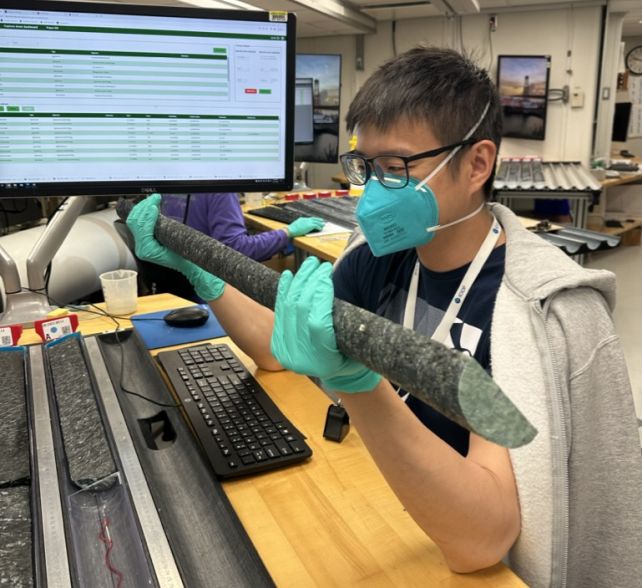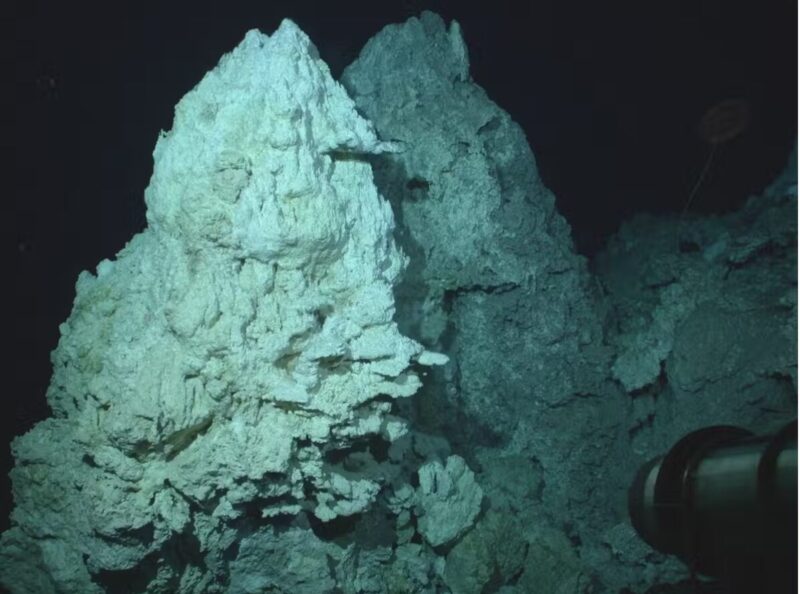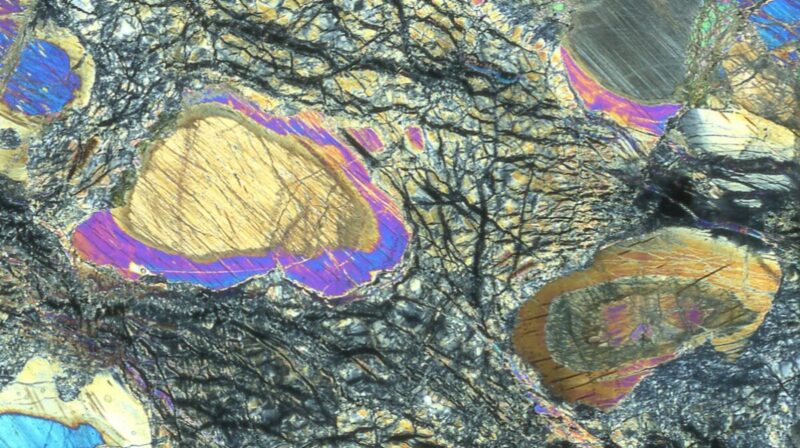Researchers have drilled a window into the layer of our Earth that is responsible for volcanic activity, crust formation, and earthquakes.
The mantle is incredibly difficult to study because it’s so deeply buried beneath the Earth’s crust, or outer skin. Now, scientists have drilled a 1,268m-deep core that reaches down into this elusive layer. It’s a scientific goldmine.
Although the mantle is a 2,900km layer of semi-solid rock, it lies at least six kilometers beneath the crust. This makes it nearly impossible to sample. But in 2023, a crack formed in the Earth’s crust on the mid-Atlantic Ridge, giving access to the upper mantle.
A research ship collected the rock core from this fault in the seafloor. They had originally planned to drill 200m down and recover as much as possible. To their surprise, they could keep drilling downward easily. Although it wasn’t easy to bring it back to the surface, they recovered almost three-quarters of the core sample.

A researcher examines part of the core sample. Photo: Lesley Anderson/Exp. 399/JRSO/IODP
Unexpected results
Since then, an international team has been analyzing the composition of the mantle, especially its minerals. Harzburgite — a variety of peridotite — is the main rock within the core. This forms when the mantle partially melts.
The results surprised them. “There is a lot less pyroxene in the rocks, and the rocks have very high concentrations of magnesium, both of which result from much higher amounts of melting than what we would have predicted,” they said.
This helps explain how magma forms within the mantle and how volcanic eruptions occur.
“It tells us how the mantle melts and feeds volcanoes, particularly those on the ocean floor, which account for most of the volcanism on Earth,” said lead author of the study, Johan Lissenberg.

Hydrothermal vents in the Lost City. Photo: NOAA
Lost City
The mantle core comes from an area of seafloor rich in hydrothermal vents known as the Lost City. Seawater seeps down into the mantle and heats up. As the seawater hits the minerals, the olivine and pyroxene within the periodite turn into serpentine minerals and produce hydrocarbons.
These methane, hydrogen, and carbon compounds release into the warm fluid, escaping from the hydrothermal vents. This fluid is crucial for the survival of microbial life.
Many scientists think hydrothermal vents may have been the starting place for life on Earth. Understanding the chemicals within the mantle could provide clues about how life began.






